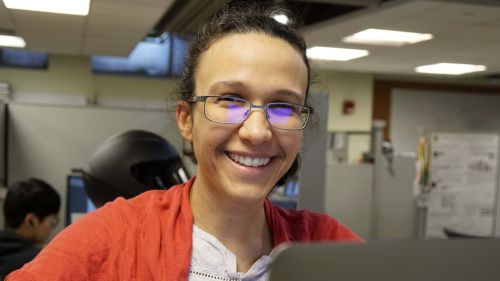By Aaron Nathans
August 22, 2023

Fog harvesting nets are used around the world to capture water, especially in dry areas with fog that comes in from the ocean.
Princeton researchers have found a potential way to capture more water by improving the efficiency of the nets.
In their recent paper, published in Nature Physics this month, a team from Howard Stone’s group led by grad student Jessica L. Wilson found that when drops on multiple parallel fibers are exposed to a cross-wind, they mysteriously align:
Intrigued by that observation, they worked to unravel that mystery, looking into the aerodynamic forces that cause the alignment. There are wakes behind the drops in the air, Wilson said, much like wakes behind a boat moving through water. The wakes are responsible for the movement of the drops and their interactions, including how the drops align, she said.
With that in mind, they then asked what would happen if multiple drops could be forced to coalesce as they attempted to align with a drop on a nearby fiber:
After coalescing, the combined drop became so heavy, it fell off the fiber – an outcome that would be welcome for applications such as fog harvesting, where one would like to drain the liquid on the net into a reservoir below.
After the heavy coalesced drop falls, new drops rush in to take their place and align with the drop on upper fiber, setting the stage for the cycle to continue. This, Wilson said, suggests that the alignment is what makes the coalescence possible, quickening the drainage of liquid from the net.
“It’s easy to neglect aerodynamic forces from nearby fibers and drops, but clearly they have an impact,” Wilson said.
“Aerodynamic interactions of drops on parallel fibres” was published August 10 in Nature Physics. The other authors other than Wilson and Stone were Princeton postdoc Martin A. Erinin, Camille Duprat of École polytechnique and a former visiting professor at Princeton, Assistant Professor of Mechanical and Aerospace Engineering Luc Deike, and Amir Pahlavan, a former Princeton postdoc who is now on faculty at Yale University. Deike is also an assistant professor of the High Meadows Environmental Institute.